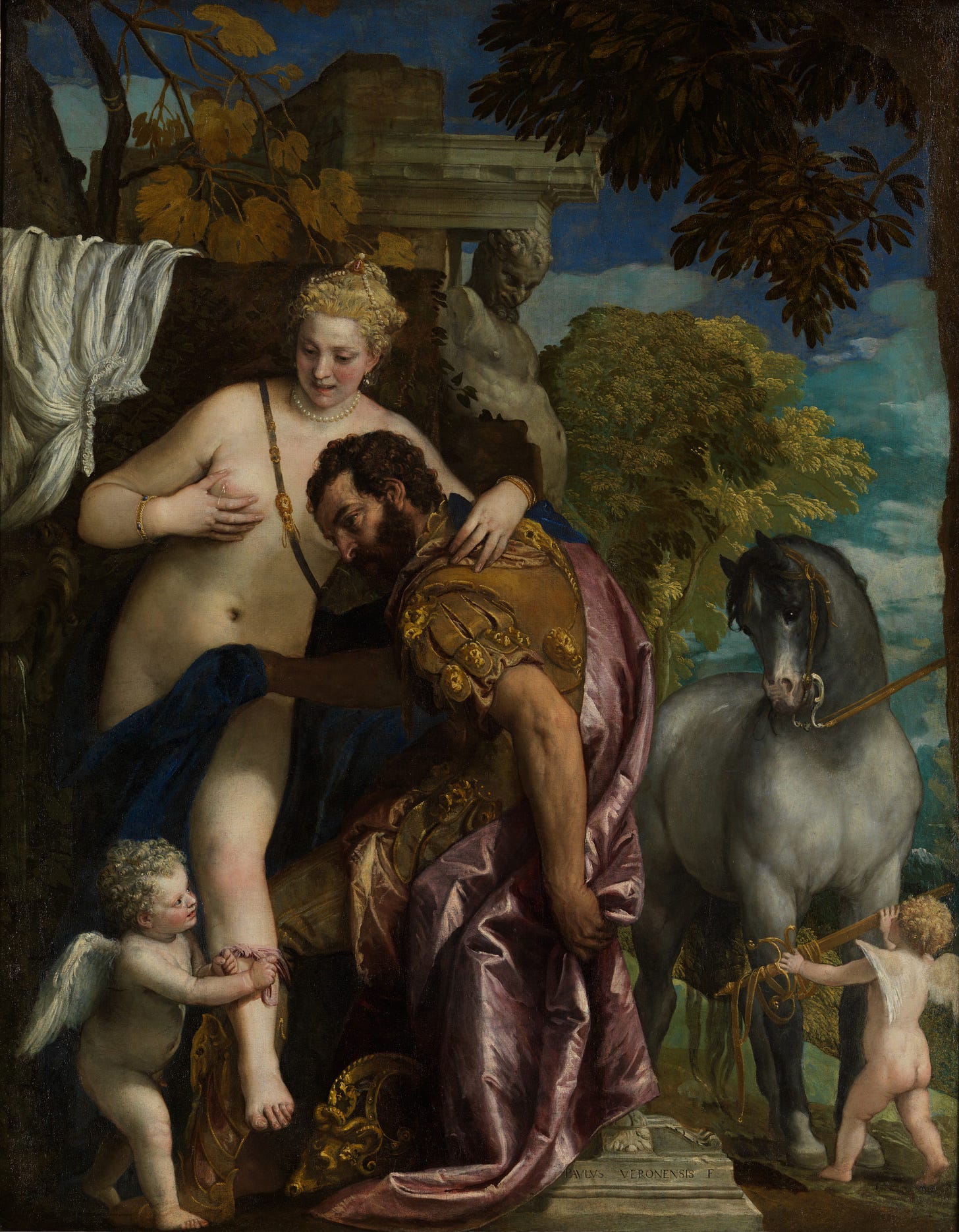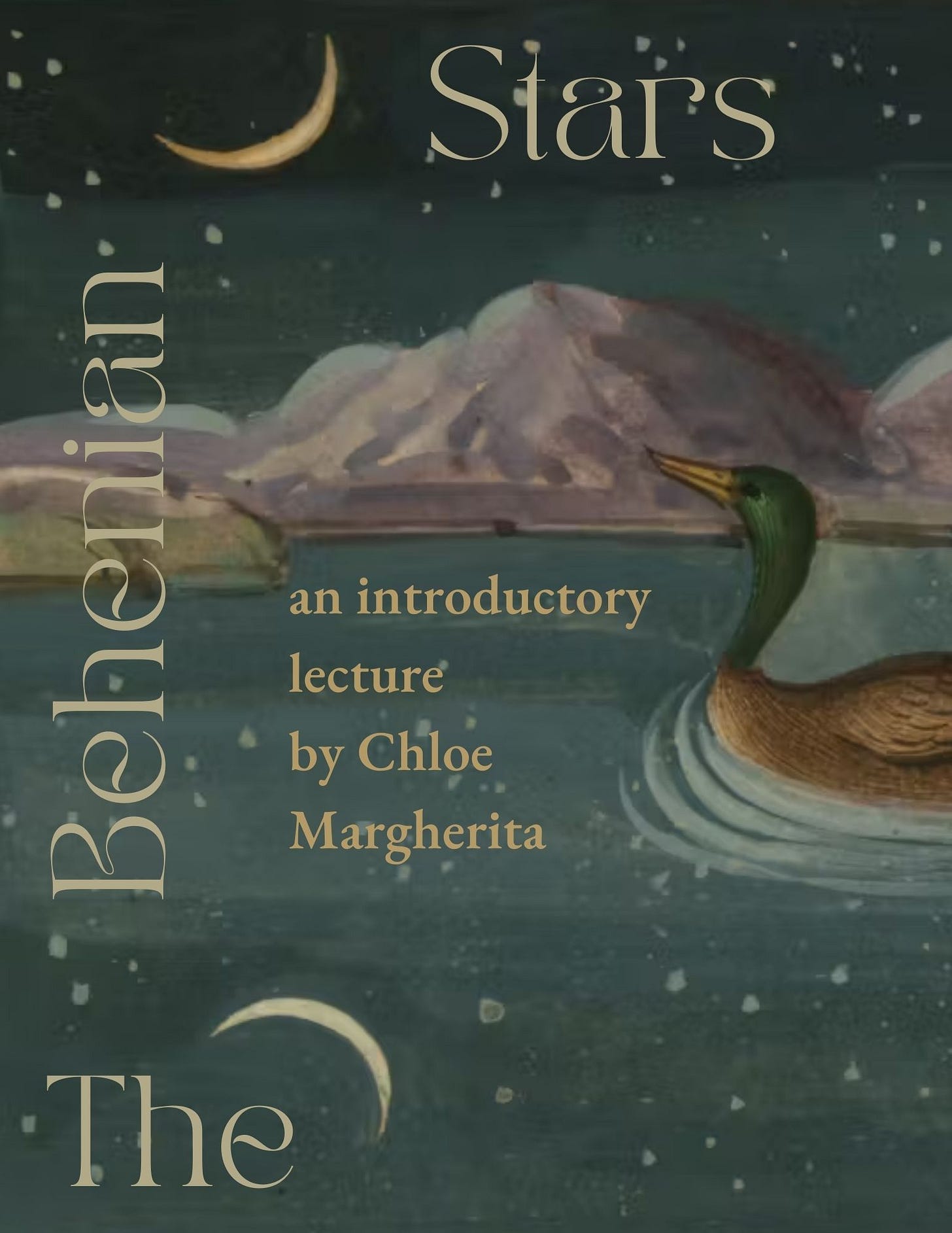✨New Lecture Coming Soon✨
As a fixed star practitioner, one of the most frequent questions I receive is where to begin. There are so many stars in the sky, it can be overwhelming to know which to focus on first.
My answer? Start with the Behenians. Their influence is always loud.
These 15 stars have the advantage of being written about and practiced for millennia. Virtually all stellar magical texts mention the Behenian stars.
My new Introduction to the Behenian Fixed Stars lecture draws on my extensive study and personal experience with these 15 powerful stars.
Let my knowledge help initiate you into their magic <3
I have studied the fixed stars for years. Not only have I given countless fixed stars readings and written extensively on them in my newsletter and for my book, I have spent the past year communing directly with the Behenian stars through ritual and magic.
This lecture will not only explore the history, meaning and uses of these stars, I will also give a general intro to each of the 15 Behenians to get a taste of the magic they have to offer.
Stay tuned for 2/1, when all of your Behenian questions will be answered <3
Understanding the planets is the key to understanding astrology. Though signs get a lot of attention in our current culture, they really get their power and attributes from the planets that rule them, fuel them, shape them. I wrote my series on Embodying the Planets to help people bring that information into their bodies through ritual activities and what I saw as the most important attributes of each planet.
If you don’t know the basic attributes of the 7 visible planets, start there:
But here’s the thing: in charts and in our lives, planets rarely show up by themselves. A rose, for example, may be of the nature of Venus for its color, smell and association with love buts its thorns are of the nature of Mars. You may have a really sweet Cancer Moon, natally or by transit, but if it’s opposed by Saturn, you can’t get the nurturing, protecting qualities of Luna without the scarcity and struggle of Saturn.
Again and again in client consults, I find that by solely talking about the planetary combinations in someone’s chart, you can get to the heart of the foundational dynamics of their heart. And if you start looking around, you see planetary duos, specifically between two planets, show up all over astrology. Lots, or calculated points of fate, are determined via the relationship between two planets in your chart. Signs are defined by both their domicile and exaltation rulers. All fixed stars are assigned a planetary duo that reflects their nature.
By beginning to understand what it means when two planets come together, you see the relationships between them and the common ways they manifest in our mixed-up, varied lives.
In our charts, a planet is considered in combination with another when they are in the same sign, in opposing signs, or in mutual reception (a swapping of rulerships, i.e. when the Moon is in Leo and the Sun is in Cancer. Terms, exaltations and decans count here too).
So today, I begin a series exploring these planetary combinations in part because I find them so interesting. This work is heavily inspired by Austin Coppock’s “36 Dramas: Essential Planetary Relationships” Lecture from NORWAC 2022, so please check that out if you want to learn more! Going beyond his wonderful starting point, I will also include information on the decans, each of which have two planetary rulers when you consider both the Chaldean and Triplicity system, as their dynamics do a great job demonstrating what the planetary combinations look like in action. We will also be examining the fixed stars that share the same nature as this planetary combination to further our understanding.
Other uses for these combinations:
understanding mixed planetary correspondences
determining which herbs may help you if they have more than one ruler
connecting with your holy guardian angel (who is classically of the nature of two planets)
seeing your chart more clearly
attuning yourself to both planetary days and hours
P.S. If you want help understanding your own planetary combinations, my books are open for February! Book now to reacquaint yourself with your magic and destiny (no big deal).
Mars and Venus: a Summary
With this pair, love meets war. Mars and Venus, while representing the opposing energies of severing and connecting, are also bound to each other in notable ways. As the malefic (Mars) and benefic (Venus) of the night sect, both of these planets are concerned with the terrestrial, the instinctual, the sensual. In the case of these two, it’s the fighting and mating instinct, contrasting impulses that often arise from the same place. You know that adage that we are hurt most by the ones you love? Mars and Venus affirm that we passion goes both ways: if you love a special someone you also have the capacity to despise them.
Temperamentally, the two are opposites. Venus, the lesser benefic, is cool and wet whereas Mars, the lesser malefic, is extremely dry and hot. But, just as we are told that opposites attract, these two have a relationship that goes beyond their antithetical connection. According to William Lilly, these planets have mutual friendship, which is notable because Venus is the only planet who likes the roguish Mars.
Venus, ever the planet of charm and connection, finds the risky, daring energy of the red planet exciting, adding some spice to her usually calm form of relating. The traditional texts, however, are quick to point out the downsides of this malefic joining this benefic. Valens tells us these two are at odds and “make men unsteady and weak of mind,” perhaps speaking to the vacillation between war and peace that comes with these two in combination. He also claims such Mars-Venus individuals “suffer crises, upsets and debts,” often in the form of untrustworthy or harmful relationships, something with which both Venus and Mars are concerned.
Keep reading with a 7-day free trial
Subscribe to Recent Bedroom to keep reading this post and get 7 days of free access to the full post archives.





